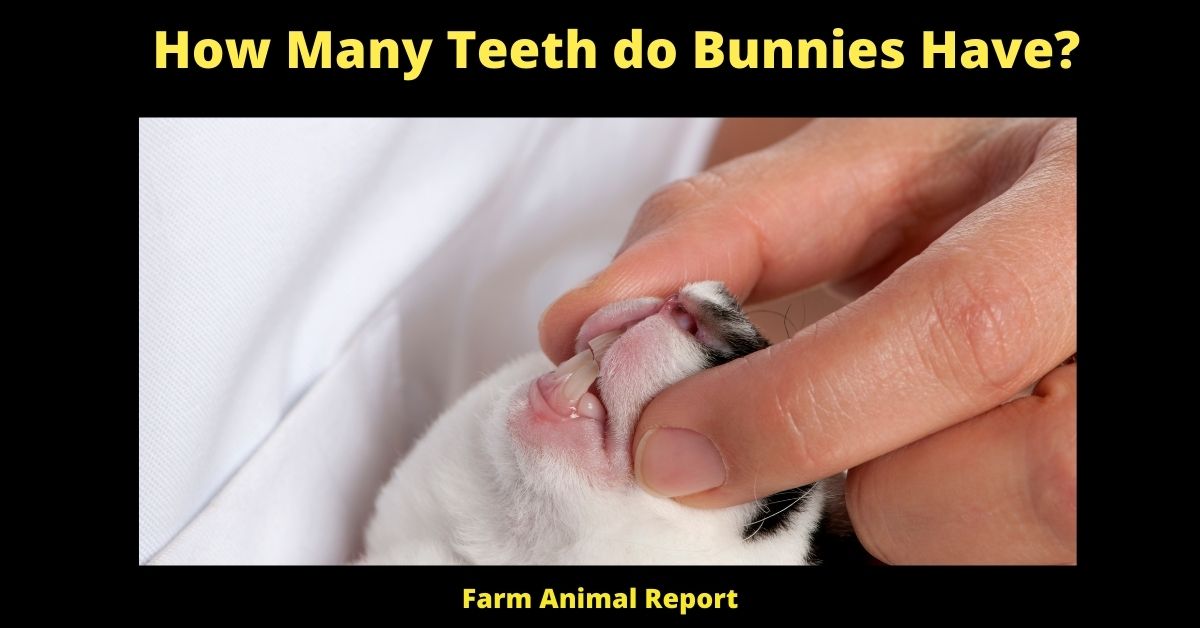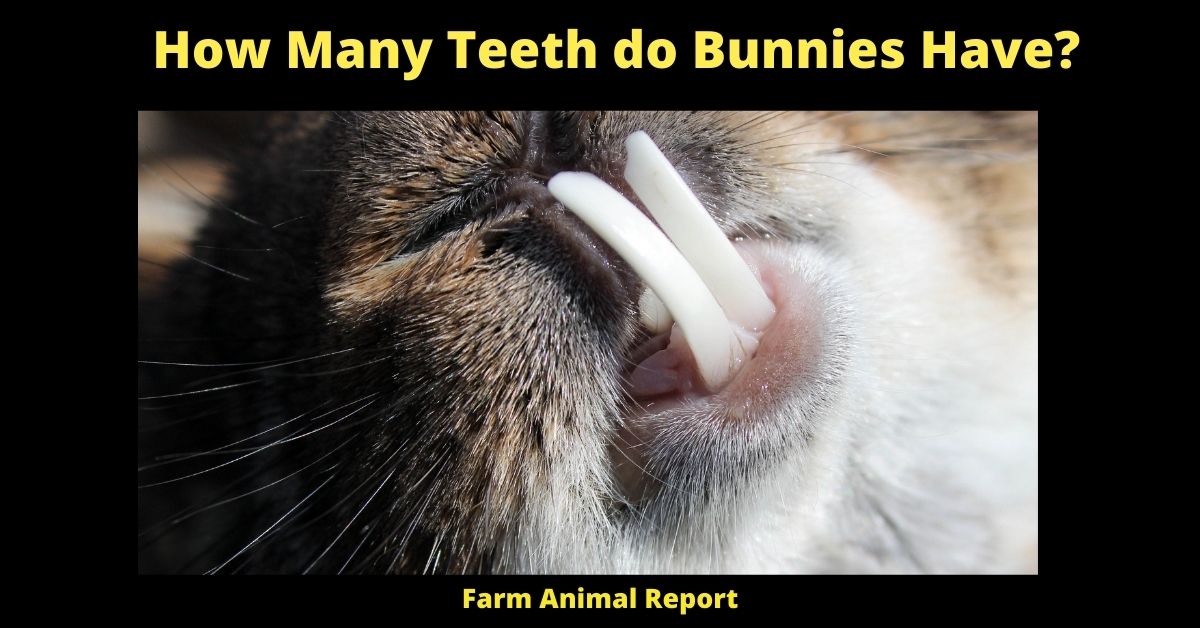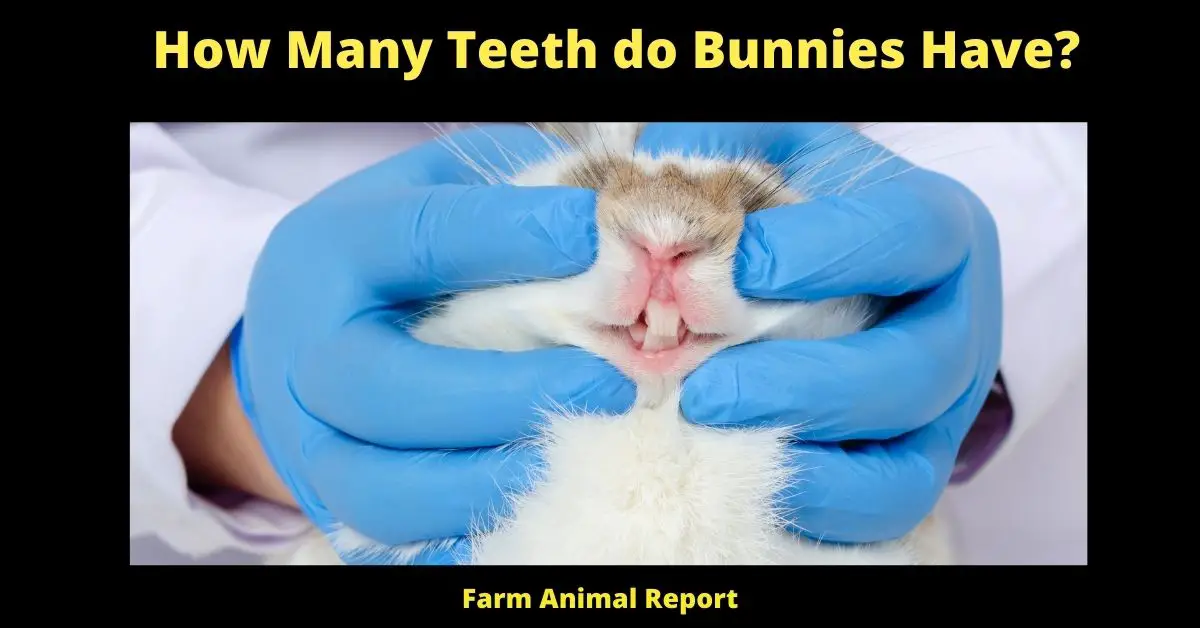Rabbits have 28 Teeth in total, 16 Upper, 14 Lower, They consist of 4 types. 1) Incisors 2) premolars 3)Molars 4) Canines
How Many Teeth do Bunnies Have?
Do you know how many teeth bunnies have? Believe it or not, they have 28 teeth! In this blog post, we will discuss the dental health of bunnies and what you can do to keep their teeth healthy. We will also cover some common dental problems that bunnies experience and how to treat them.
Bunnies have 28 teeth
The 28 teeth consist of 16 upper teeth and 12 lower teeth. These 28 teeth have special names (in order from front to back, starting with the top row of four) as follows: incisors, premolars, molars, and canine. The first pair of premolars are called peg or extra deciduous teeth because they are replaced by permanent adult ones while the second pair will remain there permanently. How Many Teeth do Bunnies Have? Jump to 18 Ways to Make Money by Rabbit Farming **CHARTS**
Rabbit Incisors
Bunnies have 4 Incisors
The sharp front teeth are used for cutting food. They have a chisel-like edge which helps them to slice through food easily. The next two pairs of teeth are called molars and premolars because they do most of the grinding when rabbits eat their food. Molars have several ridges on them which help to grind down the food into small pieces. Premolars have one ridge, as does canine (the fourth tooth in from the front).
Check Out Amazon for Resources about Breeding Rabbits
A Rabbits Incisors never stop growing
This means that they need to gnaw on things regularly to keep them ground down. This is why you will often see rabbits chewing on wood, cardboard, or other items in their environment. If their incisors get too long, it can be very painful for the rabbit and may cause them to lose weight as they won’t be able to eat properly.
A Rabbits incisors are worn down by the food they eat
The grinding action of their molars and premolars wears down the incisors so that they stay at a comfortable length. This is why you will often see rabbits with bits missing from their front teeth – it’s not because they are being naughty, but because this is how their teeth naturally wear down.
A Rabbits Premolars
Premolars have one ridge, as does canine (the fourth tooth in from the front).
Premolars are designed to help with the grinding of food. They are used to crush the food into small pieces so that it can be swallowed easily. The last two teeth in from the front of your rabbit’s mouth are called molars and they do most of the chewing on hard things like seeds or nuts, which explains why some people call them “cheek teeth”
Premolars grow continuously and are worn down by the food they eat. Types of foods that a bunny will consume help to keep these teeth ground down and healthy. The best foods to wear down their teeth are hay, fresh vegetables, and a small number of pellets.
Bunnies have 14 Molars
There are six on each side of the mouth (three uppers and three lower). The molars do most of the grinding when rabbits eat their food. They have several ridges on them which help to grind down the food into small pieces.
Molars are made of hard tissue and are meant to last a lifetime
Molars can be prone to fractures if the rabbit is given foods that are too hard. This often happens when rabbits eat nuts or seeds, which tend to break their teeth in pieces. It also sometimes occurs because of an infection called “periodontal disease” where bacteria build up around the roots of your rabbit’s teeth causing them to become weak over time.
If this happens then it may need root canal treatment such as extracting one or two molars at once (this would require surgery). The best way for you as pet owners is not only to provide hay but also fresh vegetables to help wear down their teeth.
Bunnies have Canines
Bunnys canines are important because they help them tear their food into small pieces. When bunnies eat crunchy things like carrots, celery or apples, the canines help to cut through the tough skin and flesh of the vegetables or fruit. If your bunny doesn’t have any canines, he/she may not be able to eat these
Canines are used for cutting through tough materials like plant fibers or meat. They have a sharp edge that allows them to slice easily into whatever is being cut up for consumption, but their shape means that they can also be used as tools if needed!
Canine teeth typically do not grow at all throughout an individual’s lifetime so it’s important to keep them in good condition with proper dental care from early on in order to avoid any problems later down the line (see below).
Rabbits use their front incisors and cheek teeth together when eating – incisors chop off pieces of grass, leaves, etc then molars grind these small bites between each other before swallowing.
There are two on each side of the mouth (one upper and one lower). They are sometimes called “fangs” and are used for catching prey. The canine is the last tooth in front of your rabbit’s mouth.
The fourth tooth from the front is called canine because it looks quite sharp and pointy. It’s designed to help with catching prey, which is why bunnies use it to bite people when they’re being naughty! Thankfully, this isn’t a common occurrence – most rabbits are very friendly and love nothing more than a good cuddle!

Canine never stop growing
The fourth tooth from the front is called canine. This is the only pointed tooth in a rabbit’s mouth and it is used for tearing food into smaller pieces. It’s also sometimes referred to as a “fang”!
Just like the incisors, the canine never stop growing and need to be gnawed on regularly to stay at a comfortable length. This is why you will often see rabbits chewing on things in their environment – it’s not because they’re being naughty, but because this is how their teeth naturally wear down.
A Bunnies canine teeth are used to catch prey, the type of food they eat helps to keep these teeth ground down and healthy. The best foods to wear down their teeth are hay, fresh vegetables, and a small number of pellets
Bunnies Cheek Teeth
Bunnies have Cheek Teeth There are six on each side of the mouth (three uppers and three lower). These help with grinding up food into smaller pieces so that it can be swallowed easily.
They don’t get as much use as incisors or canine because rabbits tend not to chew too much – most of their diet is made up of soft leaves rather than hard nuts! Rabbits don’t really bite people very often but if you’re worried about being bitten by one then make sure that your rabbit’s nails aren’t too long first… If a bunny does happen to nip you, it won’t do too much damage – but it will definitely leave a mark!
A Bunnies 16 Upper Teeth Consist of:
- four incisors (two on the top and two on the bottom)
- two canine teeth (one on the top and one on the bottom)
- six premolars (three on the top and three on the bottom)
A Bunnies 16 Lower Teeth Consist of:
- four incisors (two on the top and two on the bottom)
- two canine teeth (one upper and one lower)
- six premolars (three uppers and three lowers). The last set of molar teeth in a bunny’s mouth is called “molars.” They are located at the back of their mouth, right behind their cheek teeth. These help to crush down food into small pieces before swallowing.
- Bunnies typically have two molars on each side of their mouth (one upper and one lower). However, some bunnies may have up to four molars on each side (two uppers and two lower). Bunnies usually lose their baby teeth around the age of six months, and their adult teeth will start to come in at around six months old.
Baby Bunnies Teeth
Baby Bunnies are Born without any teeth, but in about a week after birth, they will start to get their bottom front incisors. This is very important because it helps them eat solid foods like hay and pellets which they need to survive! Their top incisors come in at around two weeks old, followed by the first set of molars on either side at three weeks or so.
Baby bunnies are born without any teeth — instead of having tooth buds that break through their gums as early as one day after birth! By two weeks old, these tiny creatures can already use their front incisors (the pointy ones) for chewing up food such as grasses and leaves; then around 25 days post-hatching comes a time when those adorable little bunnies start getting those teeth replaced with adult ones!
Baby Bunnies are weaned by the time they are five weeks old
Rabbits have baby teeth called milk or deciduous incisors, which come in at around two to three weeks. These will fall out and be replaced by permanent ones when your rabbit reaches six months old but may still be present for some years after this depending on how much chewing he does! The upper front incisor is shorter than its lower counterpart so that there isn’t a gap between them; both types of these bunny teeth continue growing throughout their lives (unlike human beings).
What Happens When a Bunnies Teeth Gets Broken?
Baby bunnies teeth should be checked regularly and if they are not growing in properly, it is important to consult a veterinarian.
Baby bunnies can get their baby teeth broken or chipped off due to chewing on hard objects like rocks or wood chips in the yard. Bunnies may also have difficulty eating because of how big they are compared with their mouth size! If you notice any problems, please bring your furry friend to an animal hospital as soon as possible for treatment so that nothing serious happens later down the line.
When do you need to trim Bunnies?
Bunnies’ teeth are very long so they need to be trimmed regularly. This can happen at any time and will usually only require a light trimming every few weeks or so with scissors; however, if you notice that your pet is having difficulty eating because of how big he/she has gotten then it’s best to take them in to the vet for professional help! The best way to tell if something serious needs fixing up is through observing chewing patterns & behavior changes such as not wanting food anymore
Final Thoughts – How Many Teeth do Bunnies Have?
In summary:
- Bunnies have baby teeth called milk or deciduous incisors, which come in at around two to three weeks. These will fall out and be replaced by permanent ones when your rabbit reaches six months old but may still be present for some years after this depending on how much chewing he does!
- The upper front incisor is shorter than its lower counterpart so that there isn’t a gap between them; both types of these bunny teeth continue growing throughout their lives (unlike human beings).
- Baby bunnies can get their baby teeth broken or chipped off due to chewing on hard objects like rocks or wood chips in the yard. Bunnies

If a Bunnies Teeth Are Broken What Happens?
A broken tooth in rabbits can lead to pain and infection, which may result in death. It’s important that your bunny gets immediate medical attention when this happens because waiting too long can have serious consequences. If you’re not sure whether or not your bunny’s tooth is broken, take it to a vet for an x-ray just to be safe! Bunnies should also get their teeth trimmed on a regular basis as this helps to prevent any dental problems down the line. Thanks for reading!





